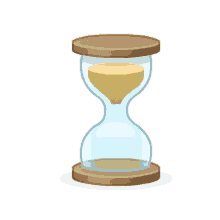Week 1 - Second Term



During the second term we will have 3 units and today we will start learning about conversion factors
Problems with units of:
-
Distance
-
Time
-
Distance/time graphs
-
Speed
-
Mass
-
Area
-
Volume
-
Density
-
Graphing
Laboratory practices: Speed, Density
Today we will have 2 goals:
Practice the way in which conversion factors are used
Review the units of distance and time.
SEL GOAL:
Learn a new and challenging topic with an open and positive mindset
Let's start with a short introductory presentation:
Then, let's practice what we know by solving these exercises:
1) There are different units according to the magnitude of what is being measured (how big or small it is). This way we won't measure something huge using small units. For each of the following, decide if you would measure them in millimeters (mm), centimeters (cm), meters (m) or kilometers (Km) (Several units are possible).
* The height of a person * The length of a pencil
* The distance from London to Paris * The length of a tennis court
* The length of a blueberry * The length of your hair
2) Let's repeat the exercise with the time units. Which units would you use to measure (Several units are possible).
* Your age
* History
* The time it takes for a planet to turn around the sun
* The time an apple takes to fall from a tree
* The time a class lasts
3) Now, use the right conversion factors to convert the following time values (you must show the procedure according to what you learnt during the explanation). Write 2 decimal numbers only.
a) 3605 years in centuries
b) 36 years in months
c) 6 hours in minutes
d) 40000 minutes in hours
e) 89 years in lustrums (1 lustrum = 5 years)
f) 15 minutes in seconds
4) Convert the following length values:
a) 5.4 meters to cm
b) 64 km to miles (1 mile = 1.6 Km)
c) 890 cm to m
d) 5.2 m to cm and then to mm
e) 7896 m to km
f) Your height in feet (1 feet = 30.48 cm)
The traffic in the photograph is moving along
a busy highway. The drivers have to be
careful to avoid collisions.
They must obey the speed limit. There are
signs along the road which show the speed
limit. The sign in the photograph shows that
the speed limit is 80 kilometers per hour.
But this speed limit can vary according to the
weather, for instance if it is raining.
Today we will learn how to calculate the average speed of a moving object and how to use the speed triangle to calculate distance or time given a certain speed.
For the exercises that require calculations, you MUST show your work (procedure)
1) In previous years you have learned about forces and movement. Use what you know to explain why cars should travel more slowly in wet weather.
2) A car travels 100m in 5s. What is its average speed?
3) A red car travels 400m in 20s
A blue car travels 0.66Km in 30s
Which car has the greater average speed?
(Be careful with the units)
4) A cyclist travels 80000m in 2 hours.
a) Calculate her speed
b) Calculate the speed in Km/h
(for this, first convert the distance to Km
and then, calculate the speed again with this number)
5) A train is traveling at an average speed of 140 Km/h. Use this speed value and the formulae from the triangle to solve the questions:
a) How far will it travel in 2.4 hours? show your working
b) How long will it take to travel between 2 stations 525 km apart?

Conversion Factors


Class 1: Distance and Time






When the teacher
says we are going
to study conversion
factors
When you learn how to solve them and you realize it was not so hard
Class 2 - Speed




